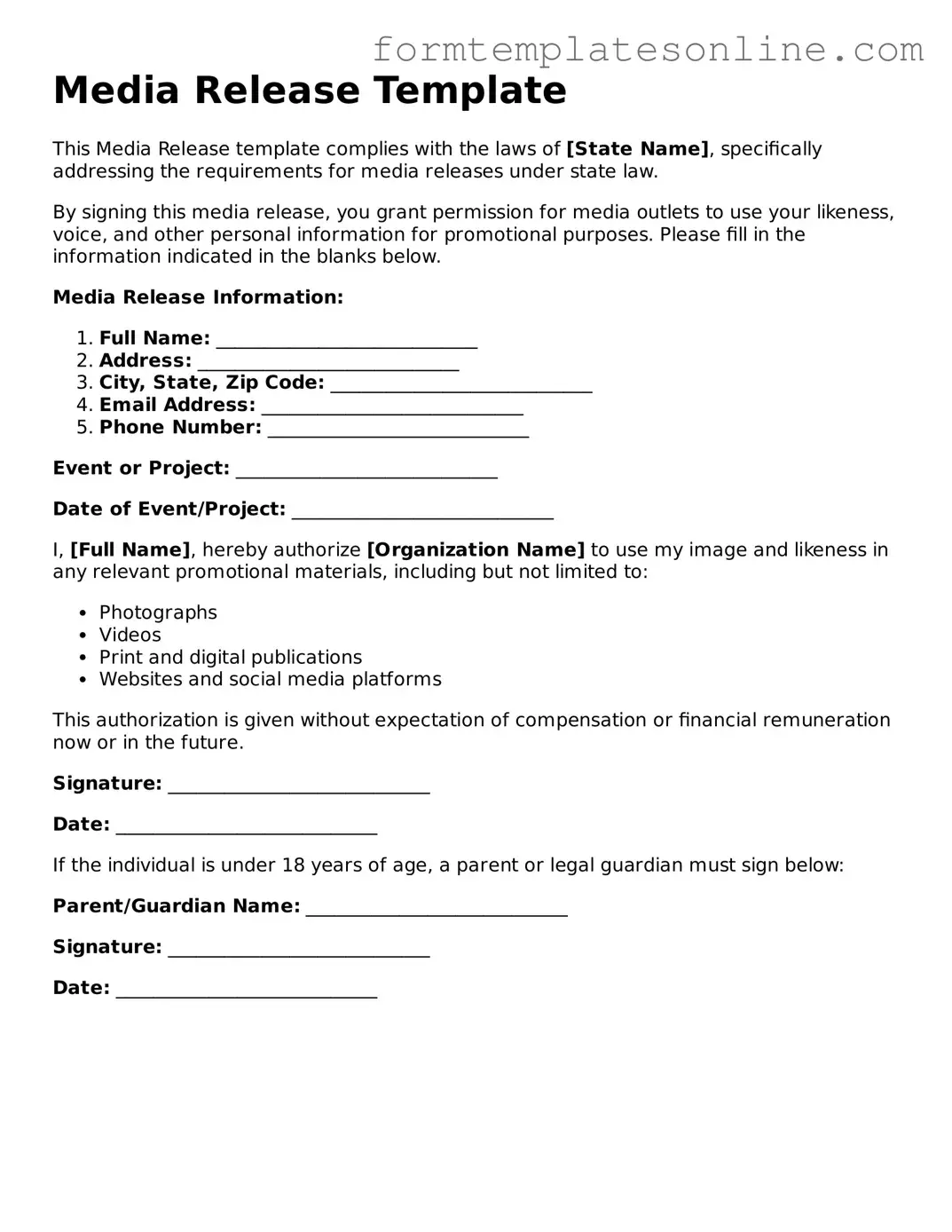What is a Media Release form?
A Media Release form is a document that grants permission to use an individual’s name, image, voice, or other likeness in various media formats. This can include photographs, videos, or written materials. By signing this form, individuals allow their likeness to be used for promotional, advertising, or other purposes as specified in the document.
Why is a Media Release form important?
This form is crucial for protecting both the individual and the organization using their likeness. It ensures that everyone is clear about how the media will be used. Without a signed release, organizations could face legal issues if they use someone's image or voice without permission.
Who needs to sign a Media Release form?
Generally, anyone whose likeness will be used in media should sign the form. This includes models, actors, participants in events, or anyone featured in promotional materials. If the individual is a minor, a parent or guardian must sign on their behalf.
What should be included in a Media Release form?
A well-crafted Media Release form should include the following elements: the name of the individual granting permission, a description of the media being created, the intended use of the media, and the duration of the agreement. It should also specify if there is any compensation involved and provide a space for signatures and dates.
Can a Media Release form be revoked?
Once signed, a Media Release form is generally considered binding. However, individuals may have the right to revoke their consent in certain circumstances. It is essential to review the terms outlined in the form to understand any limitations or conditions regarding revocation.
Is there a difference between a Media Release form and a Model Release form?
While both forms serve similar purposes, a Media Release form is broader and can apply to various media formats. In contrast, a Model Release form specifically pertains to the use of a model’s likeness in commercial photography or advertising. Depending on the context, one form may be more appropriate than the other.
What happens if I don’t sign a Media Release form?
If you choose not to sign a Media Release form, the organization cannot legally use your likeness in their media. This decision may limit your participation in specific events or projects, especially those that rely on media promotion. It’s important to weigh your options and understand the implications of your choice.
